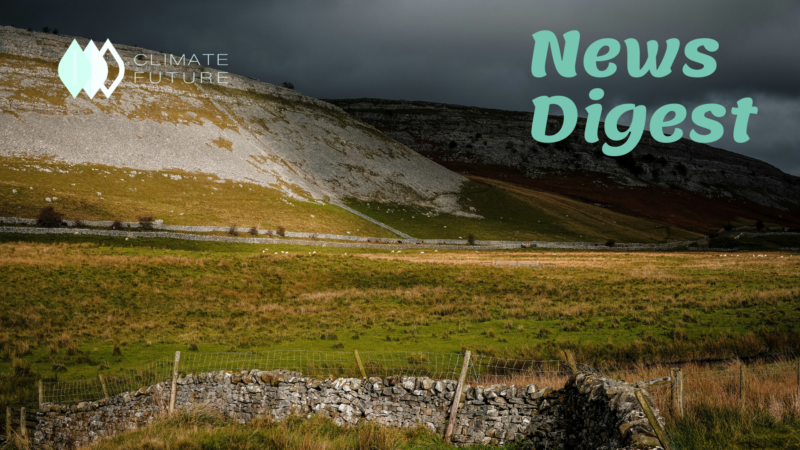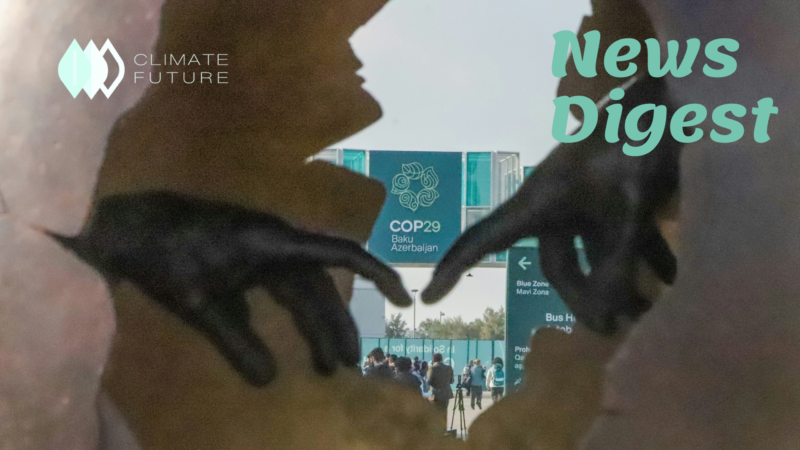UNESCO Zimbabwe, UNESCO Kenya co-organized a forum on Oct 22
On October 22, the UNESCO Harare and Nairobi Offices organized a African Regional Dialogue on “Positive Peace in
Africa – The Environment We Need”. Diinsider team was invited to speak during the forum and introduce our work in establishing Climate Future platform. Other speakers of the event include chairperson of Indigenous Peoples of Africa Coordinating Committee (IPACC), regional coordinator of IUCN, researchers of Addis Ababa University and so on.
‘Vague’ net zero promises not enough: planet still on track for catastrophic heating, UN report warns
According to a new report by the UN Environment Program (UNEP), the world is in danger of the rise in global temperature of at least 2.7 degree Celsius in this century, although the new and updated commitments set ahead of the pivotal climate conference COP26 is a positive step forward. Nationally Determined Contributions (NDCs) were set with the agreement from each country to reduce national emissions and other commitments made for 2030. The aim is to reduce 7.5 percent of annual greenhouse emission in 2020. However, that is not enough and the world needs a 55% reduction to control global temperature rise below 1.5 Degree Celsius. The European Union plus 49 countries in total have pledged a net zero target. This includes more than half of global domestic greenhouse gas emissions, a third of the global population and over half of global GDP. In order to have a chance of reaching the 1.5°C target, the world needs to reduce half of the greenhouse gas emissions in the next eight years.
UN-backed report reveals rising climate change risk across Africa
The State of the Climate in Africa 2020 report features the continent’s disproportionate vulnerability and how to invest in climate adaptation, weather and climate services and early warning systems. It is a collaboration between the African Union Commission, WMO, the Economic Commission for Africa through the Africa Climate Policy Center, international and regional scientific organizations and the UN agencies. It is estimated that up to 118 million people from extremely poor groups in the continent will be exposed to floods, drought and extreme heat by 2030, which will challenge the progress towards growth and poverty alleviation. According to the report, the investment in climate adaptation for sub-Saharan Africa would cost each year from $30 to $50 billion over the decade, or approximately two to three per cent of GDP. Rapid implementation of African adaptation strategies will help economic development and job opportunities as part of post-pandemic recovery. Setting priorities of an African Union green recovery plan would allow for effective climate action and sustainable recovery.
UN sounds alarm on missing climate pledges
According to a UN report on 25 October, global governments’ plans of cutting emissions in the years ahead are not enough to prevent the climate change which can lead to endless suffering. Until the United Nations COP26 conference begins in less than a week, the report highlights the gaps between the actions that different governments are taking today and required actions to meet the 2015 Paris Agreement target to limit human-caused global warming to 1.5 degrees Celsius. Due to an analysis by the UNFCCC, global emissions would be 16% higher in 2030 than in 2010 under countries’ current pledges. When there are no self-assertive commitments, at the end of the century global temperatures could reach 2.7 degrees Celsius above pre-industrial levels.
‘No time to lose’ curbing greenhouse gases: WMO
According to a new report published on 25 October by the UN weather agency, heat-trapping greenhouse gases affected a new record last year. Even though the economic slowdown made a temporary decline in new emissions, it has no obvious impact on the atmospheric levels of greenhouse gases. When emission continues, global temperatures will still be rising. From sudden heat and rainfall to sea-level rise and ocean acidification, temperature rises will come together with extreme weather conditions which can impact socio-economic conditions. Generally, half of today’s human-emitted CO2 exists in the atmosphere and the other half is absorbed by land ecosystems and oceans. However, the absorption capacity of oceans and land ecosystems may become less effective against temperature rises in the future. At the same time, many countries are posting carbon neutral targets among the hope that COP26 will meet a visible increase in commitments.
Climate change: Nature readers say their fears are growing
When almost 200 governments prepare for a pivotal meeting on climate change, scientists explained their fears about global warming and greenhouse gas emissions. Before the COP26 to the United Nations Framework Convention on Climate Change, among the 65o readers who responded to a Nature survey expressed that they are extremely worried about climate change. In 2015, 196 governments agreed in Paris to limit global warming to under 2 degree Celsius and preferably below 1.5 degree Celsius to pre-industrial temperatures. However, the world has warmed by about 1.2 degree Celsius when compared with pre-industrial times. Scientists thought that it would reach 1.5 degree Celsius in just 15 years when there is no decrease in greenhouse gases emission.



